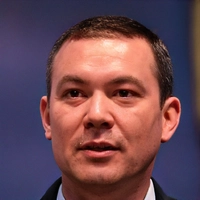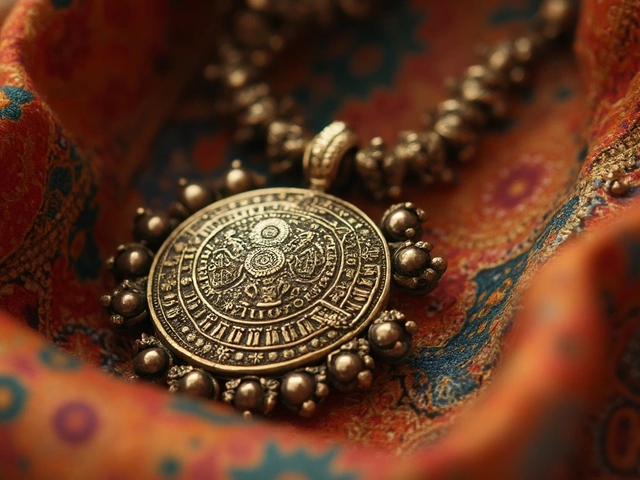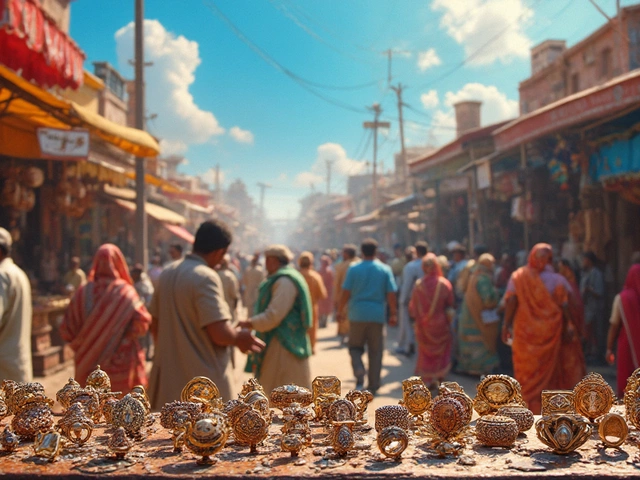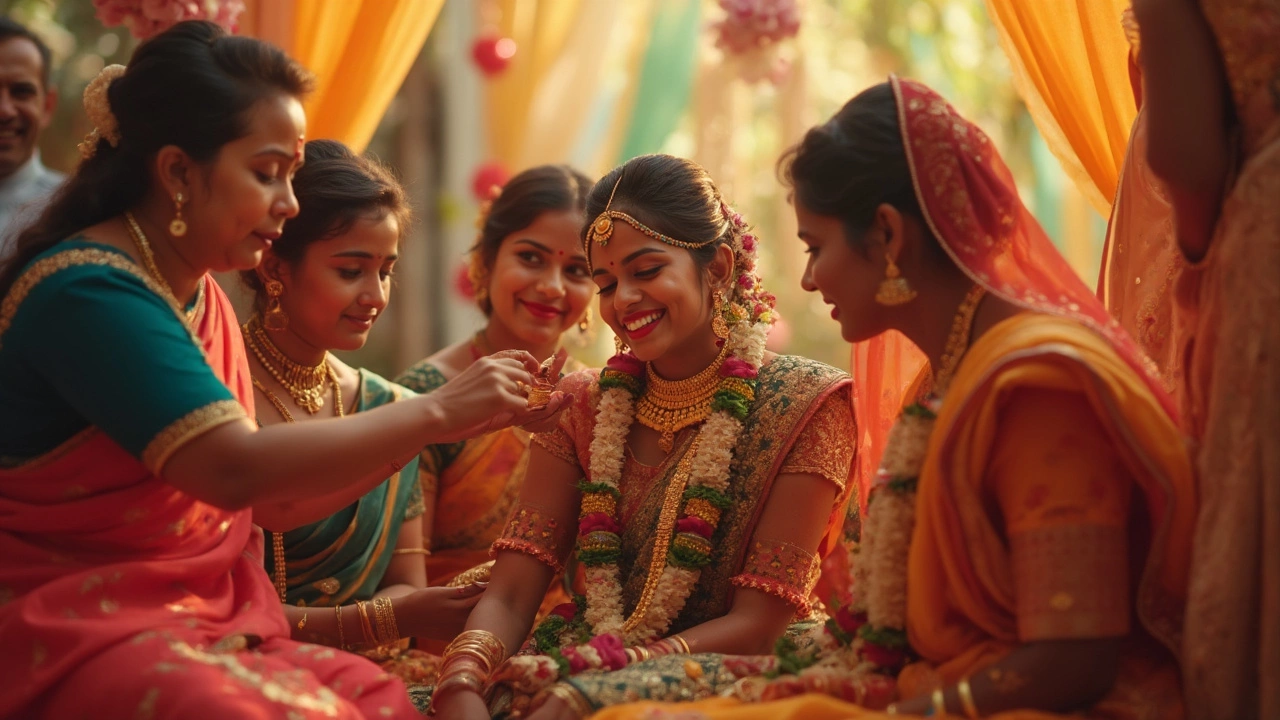
If you’ve attended a Hindu wedding—or even scrolled through Instagram wedding photos—you’ve probably noticed that heart-stopping moment when the groom ties a mangalsutra around the bride’s neck. It’s a big deal. But when it comes down to it, who actually hands the mangalsutra to the groom? Most people think it’s a no-brainer, but there’s more to it than what you see on the surface.
In classic South Indian weddings, it’s often the groom’s parents who offer the mangalsutra to him right before the tying ritual. In some North Indian families, the bride’s folks pitch in too, or even buy the mangalsutra themselves. This isn’t set in stone, though. Regional and family traditions can flip the script. If your aunt says one thing and your future in-laws say another, you’re not alone—and nobody’s doing it wrong.
So, if you’re preparing for your own big day (or trying to help out a cousin), focus less on who ‘should’ present the mangalsutra, and more on what works for both families involved. The main goal: keep the ritual smooth and drama-free. If everyone’s happy, you’re nailing it. Worried about whose taste wins for the design? That’s another hot topic you’ll want to think about early.
- The Core Ritual: Who Actually Gives the Mangalsutra?
- Family Traditions and Modern Tweaks
- Mangalsutra Choices: Tradition vs. Style
- Planning Tips for a Smooth Ceremony
The Core Ritual: Who Actually Gives the Mangalsutra?
If you ask five people, you’ll probably get five answers on who gives the bride the mangalsutra. This is one of those wedding rituals that looks the same across ceremonies, but the nitty-gritty details can totally change based on where the families come from.
Traditionally, in South Indian weddings—like in Tamil and Telugu communities—the groom’s parents are responsible for bringing and presenting the mangalsutra. They usually hand it to the groom during the actual tying ceremony, right in front of everyone. The idea is that this necklace isn’t just a gift, but a symbolic blessing and commitment from his family to the new bride. In these communities, it would be kind of awkward if anyone but the groom’s side provided it.
Flip to some Maharashtrian families and you’ll see the bride’s parents getting involved. Sometimes, they buy the mangalsutra themselves or chip in for the gold. In Gujarat, it’s common for the families to discuss it mutually and split the costs. There’s really no single rule across India.
Here’s a simple breakdown of how it usually goes in most modern weddings:
- The mangalsutra is bought by either the groom’s or bride’s family, depending on tradition and agreement.
- Right before the big moment, whoever’s responsible hands the mangalsutra to the groom—sometimes via the priest.
- The groom ties it around the bride’s neck, with the family and guests watching. Some Pandits (priests) recite prayers during this part.
One popular wedding planner from Mumbai told India Today:
"The mangalsutra ritual changes from family to family. These days, many couples prefer to pick the design together and even split the cost."
Bottom line: The role of who gives the mangalsutra is less about strict rules and more about what feels right for both families. The focus is on unity, blessings, and a new chapter—nobody’s really counting who paid or handed it over as long as the moment goes smoothly.
Family Traditions and Modern Tweaks
Family traditions around giving the bride her mangalsutra can get pretty specific depending on where your families come from. In many Tamil and Telugu weddings, the groom’s mom or close female relatives hand over the mangalsutra at the right moment, treating it almost like a sacred handoff. In contrast, Marathi and Gujarati weddings sometimes see the bride’s family buying the mangalsutra, especially when both sides want to keep things equal.
Those rules aren’t always followed today. In a recent 2023 survey by WedMeGood, nearly 42% of Indian couples said their mangalsutra ceremony didn’t stick to strict family tradition—parents and even siblings helped out, or sometimes the couple chose it together at the store and brought it in themselves. People are tweaking traditions to fit what feels natural. For couples spread out between cities or even countries, sometimes the mangalsutra is bought online or shipped across families before the big day.
It’s not just about who presents the mangalsutra, either. Today's families often care more about keeping both sets of parents involved, versus sticking to one “right” way. If you’re planning, talk it out with parents on both sides weeks ahead of time. Here's what usually works best these days:
- Have a quick family call or group chat so no one feels left out.
- Decide who’s shopping for the mangalsutra and who hands it over—some split the cost to keep things fair.
- Avoid last-minute stress by assigning a relative to bring the mangalsutra to the mandap or venue.
To give you a flavor of how different regions and families do it, check this table:
| Region | Who Gives the Mangalsutra? |
|---|---|
| South India (Tamil, Telugu) | Groom's mother/female relatives |
| Maharashtra/Gujarat | Bride's family (often buys it) |
| North India (Punjab, UP) | Varies, sometimes bride’s parents or both families |
| Modern Urban | Flexible – sometimes the couple, or joint families |
The takeaway? Don't sweat about “rules.” Families mix things up all the time, so just focus on open conversations and what makes everyone feel included.
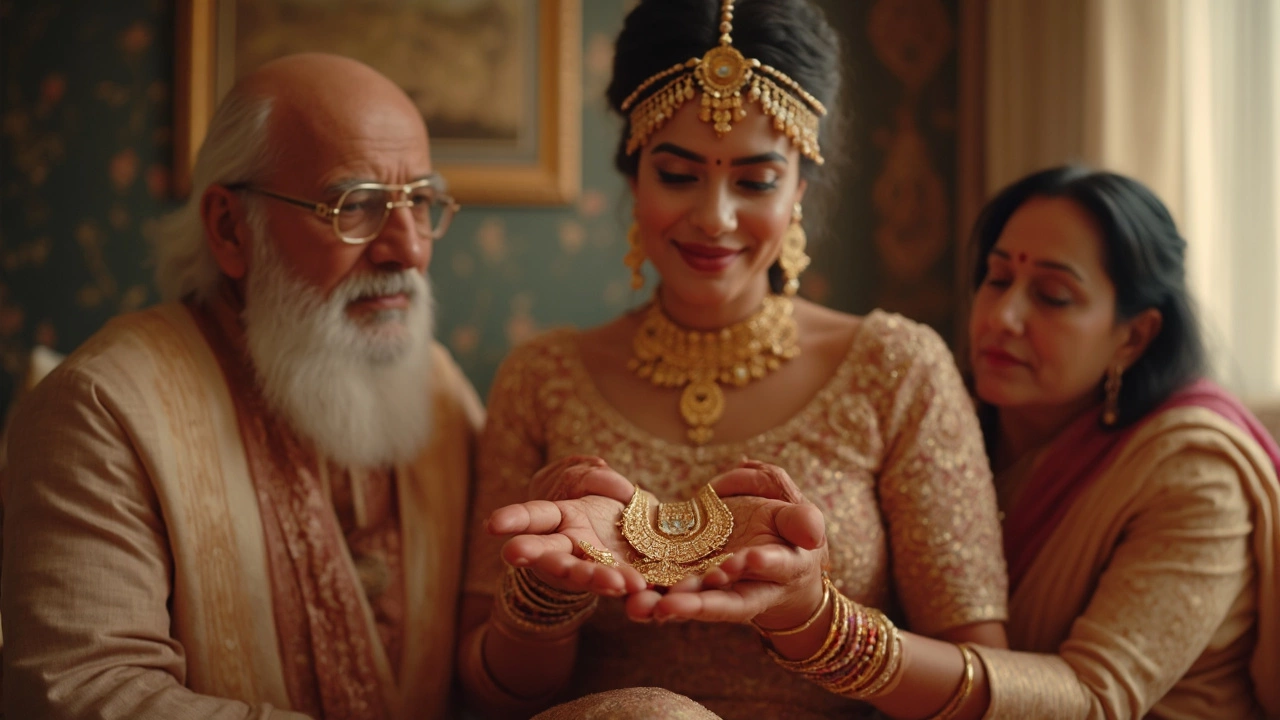
Mangalsutra Choices: Tradition vs. Style
Picking a mangalsutra is trickier than it sounds, and it always leads to this classic debate: stick to what’s traditional, or go for what looks good? The traditional mangalsutra usually comes with black and gold beads, sometimes a chunky gold pendant, and a simple, no-fuss chain. But these days, couples want the design to match their style and daily routine—sometimes completely changing the way the mangalsutra looks and feels.
If you’re trying to walk that middle path (and avoid disappointing grandma or your Instagram-loving cousin), it helps to know what’s actually trending and what matters most in family customs. According to a 2023 survey by the Indian Jeweller magazine, 52% of brides chose lightweight, minimalist mangalsutras over traditional bulky ones because they’re easier to wear every day.
Cultural expert Dr. Rajeshwari Patel says, "Wedding rituals around the mangalsutra are important, but its meaning doesn’t change with the design. Couples today often mix traditional and modern elements, and that’s perfectly valid."
Some families believe only gold is acceptable and insist on classic black bead chains, while others are fine mixing diamonds or even colored stones. If your in-laws have strong opinions, maybe consider a double-chain or a detachable pendant–something that fits both their expectations and your wardrobe.
- Traditional mangalsutra: black beads, yellow gold, basic pendants, typically 24 inches or longer.
- Modern mangalsutra: shorter chains, diamonds instead of gold, quirky motifs (think initials, hearts, even zodiac signs).
- Hybrid options: detachable pendants for parties, lightweight for daily use, or custom designs blending both worlds.
Check out how preferences have changed:
| Year | Popular Style | % Brides Choosing It |
|---|---|---|
| 2015 | Traditional Gold & Black Beads | 70% |
| 2020 | Hybrid (Detachable/Custom) | 34% |
| 2023 | Minimalist/Modern | 52% |
If you’re picking a design together, talk through your practical needs. Will you wear it daily or only for festivals? Does it need to work for the office, not just family events? And importantly—what will make you feel married but still totally yourself? Try a few designs, snap photos, text them to your mom, and don’t buy until the whole crew is on board. If my cat Whiskers could vote, he’d probably go for the one with the shiniest pendant—so don’t rule out the style that catches your eye, even if it feels a bit bold.
Planning Tips for a Smooth Ceremony
If you want your mangalsutra moment to go off without a hitch, there’s a bit more to it than just showing up. Little details make all the difference during a wedding ceremony, especially when the families have different ways of doing things. Here’s how you can avoid last-minute confusion and keep everyone happy.
- Talk about the mangalsutra in advance. Don’t just assume one side knows what to do or whose job it is to provide the mangalsutra. Get both families together (even if it’s a group chat with your aunties and uncles) and discuss it openly. Who’s shopping for it? Who’s paying? If everyone’s on the same page early, it’s way less stressful on the day.
- Choose a design early. Picking the mangalsutra design can take longer than you think, especially if you’re balancing tradition and modern style. Start looking at designs at least two months before the wedding. Give yourself time to customize if you want initials or special symbols.
- Keep the mangalsutra safe and ready. Assign someone trustworthy—often a family elder—to hold onto the mangalsutra and hand it to the groom at the right moment. You don’t want a frantic search during the ceremony (it happens more than you think).
- Run through the steps with your priest. Temples and wedding priests sometimes have strong preferences about how rituals should be done. Do a quick rehearsal or at least confirm the order of events so nothing feels rushed or out of sync in front of all those cameras.
If you’re worried about hurting anyone’s feelings, here’s a helpful approach: let both families contribute. For example, one side can buy the mangalsutra, and the other side can purchase the wedding saree or help with another ritual. It’s about teamwork.
Here’s a quick look at who typically handles the mangalsutra across regions:
| Region | Who Buys/Offers the Mangalsutra |
|---|---|
| South India | Groom's family |
| North India | Bride's family (sometimes Groom’s too) |
| West India (e.g., Maharashtra) | Groom's family, sometimes with help from Bride's family |
| East India | Tradition varies |
If you’re hiring a wedding planner, add the mangalsutra to your checklist. Ask them to remind families about the ritual, manage timing, and keep the piece in a secure place before the actual ceremony.
I’ve even seen families buy two mangalsutras—one traditional and one modern—so the bride can wear whichever suits the mood. Don’t hesitate to do what makes you comfortable. No hard rules, just what works for you and your loved ones.
